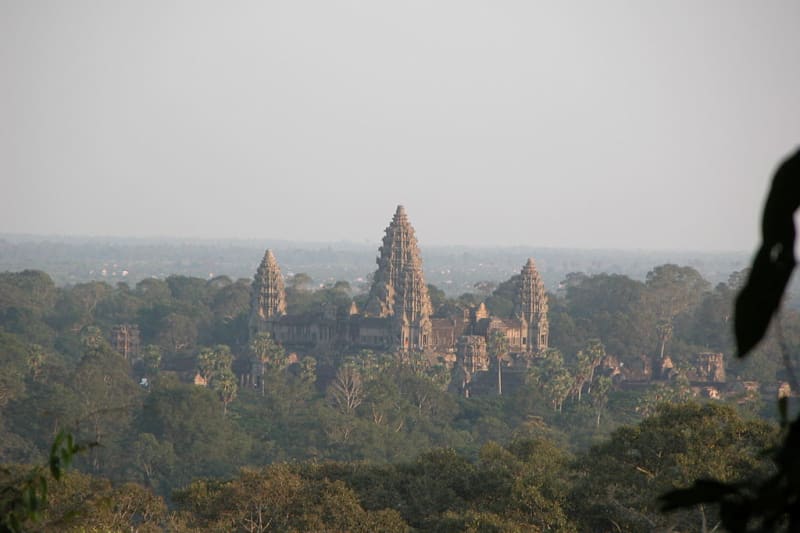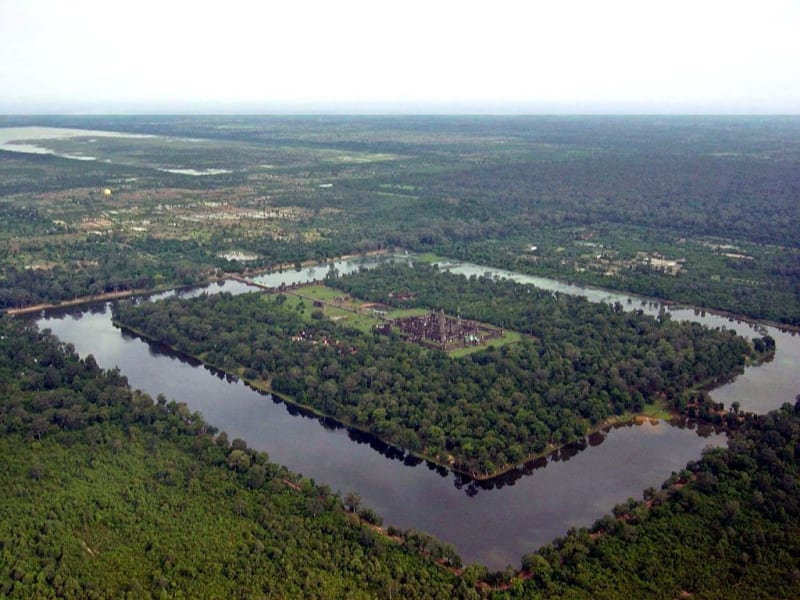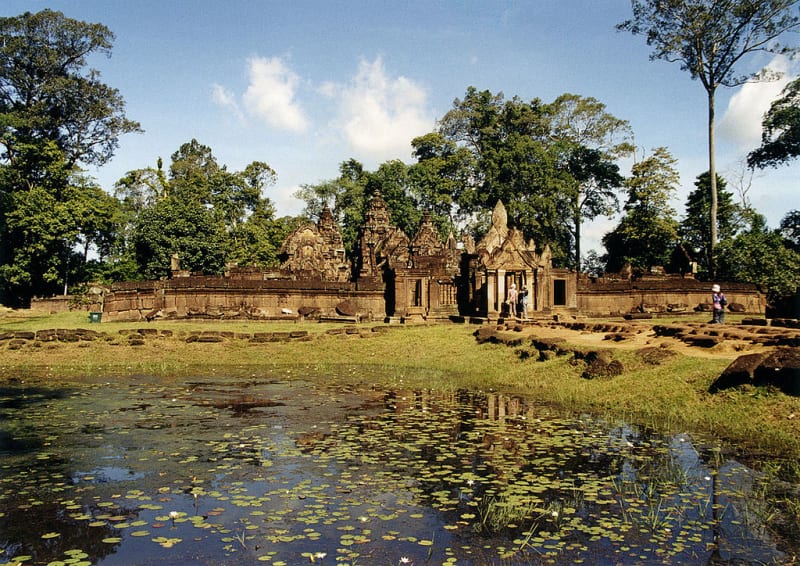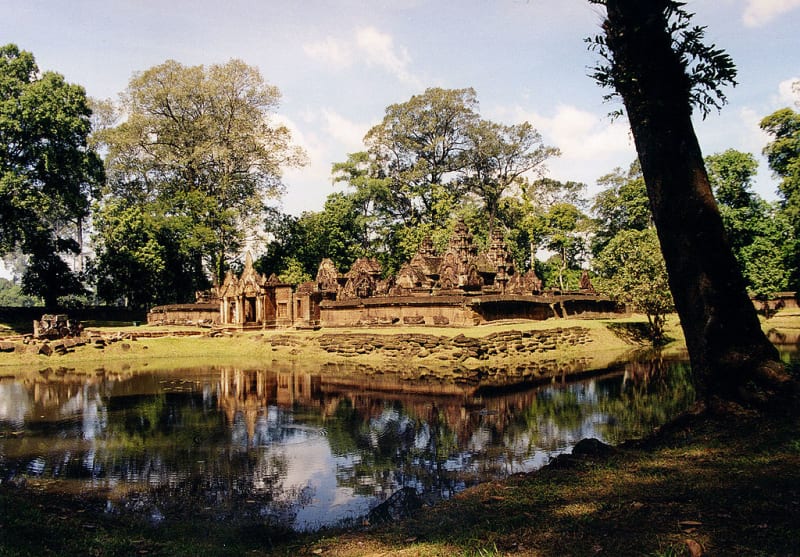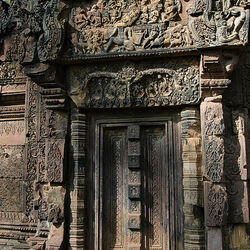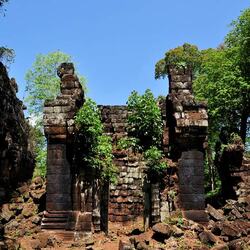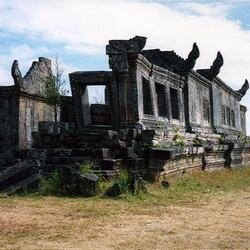Angkor
Angkor was once the capital of the Khmer Empire in the 9th and 15th centuries. The scale of the city is amazing 24 by 8 kilometers, here you can see many monuments of ancient art, for example: the temples of Angkor Thom, Preah Kan. It is located about 240 km from the current capital of Cambodia, Phnom Penh.
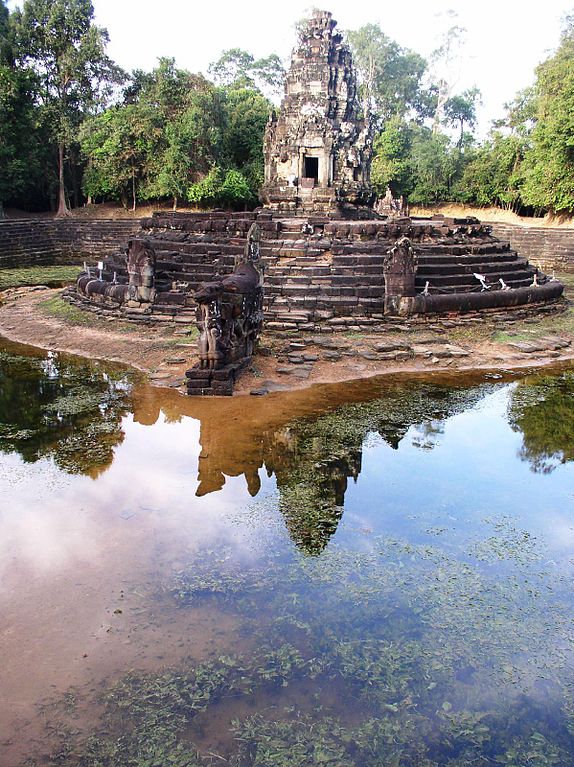
In fact, Angkor is a huge temple complex. During the reign of the Khmer Empire, houses were created mainly from wood, but wooden buildings quickly collapsed due to rains and heat. Temples, on the contrary, were built of stone, and tuff was used to build the walls surrounding the city. Thanks to this, we can see many temples and fortifications in the city, which had over a million inhabitants during the prosperity of the Khmer Empire, being the most populated city of those times.
The Khmer people usually built temples in honor of some event, such as the Preah Kang Temple, which was built to commemorate the victory of King Jayavarman VII over the Chams. But some believe that the temple was built in honor of the king's father. Nowadays, this magnificent temple has already been practically cleared of the jungle, although only a couple of decades ago huge trees grew on the temple grounds. During the reign of Jayavarman VII, he ordered the construction of another Ta-Prum temple in honor of his mother. Until recently, this temple was also covered with jungle, giving it a special beauty and mystery.

Temples in Angkor were built without a cement mixture, the blocks were interlocked in the form of a lock, which creates some difficulties in the restoration of temples. Before restoration, the temple is usually cleared of trees and other vegetation. It takes 4 months to remove a large tree. Then the temple is disassembled and photographed, the data is processed on a computer and the original location of the blocks is restored, replacing the destroyed areas.
Of all the temples of Angkor, Angkor Wat is the best preserved, embodying the harmony and elegance of Asian culture. The temple was built for 30 years by order of Suryavarman II and became his mausoleum after the death of the king. Another attraction of the city is the Angkor Thom fortress, and 2 km from it is the main Bayon temple with 54 towers, the tops of which are decorated with four Buddha figures.
The temple complex took 4 centuries to form, beginning with Prince Jayavarman II in 802 and ending with King Jayavarman VII in 1218, due to his death. According to another version, the construction of temples was stopped due to the fact that the sandstone ran out. The rulers increased the size of the city several times, as the center of the city was moved to the outskirts and they began to erect a new city, and in the center they erected a huge temple with five towers, depicting the center of the world - Mount Meru. As a result, Angkor became a colossal temple complex.
The power of the Khmer Empire waned due to protracted wars, and in 1431 Angkor fell to the Siamese forces. The city was abandoned and for several centuries it was completely hidden by tropical thickets, until in 1861 it was found by a naturalist from France, Henri Mouot.
Angkor can be reached from Siem Reap, which is just 5 km away. Siem Reap has an airport and hotels.
